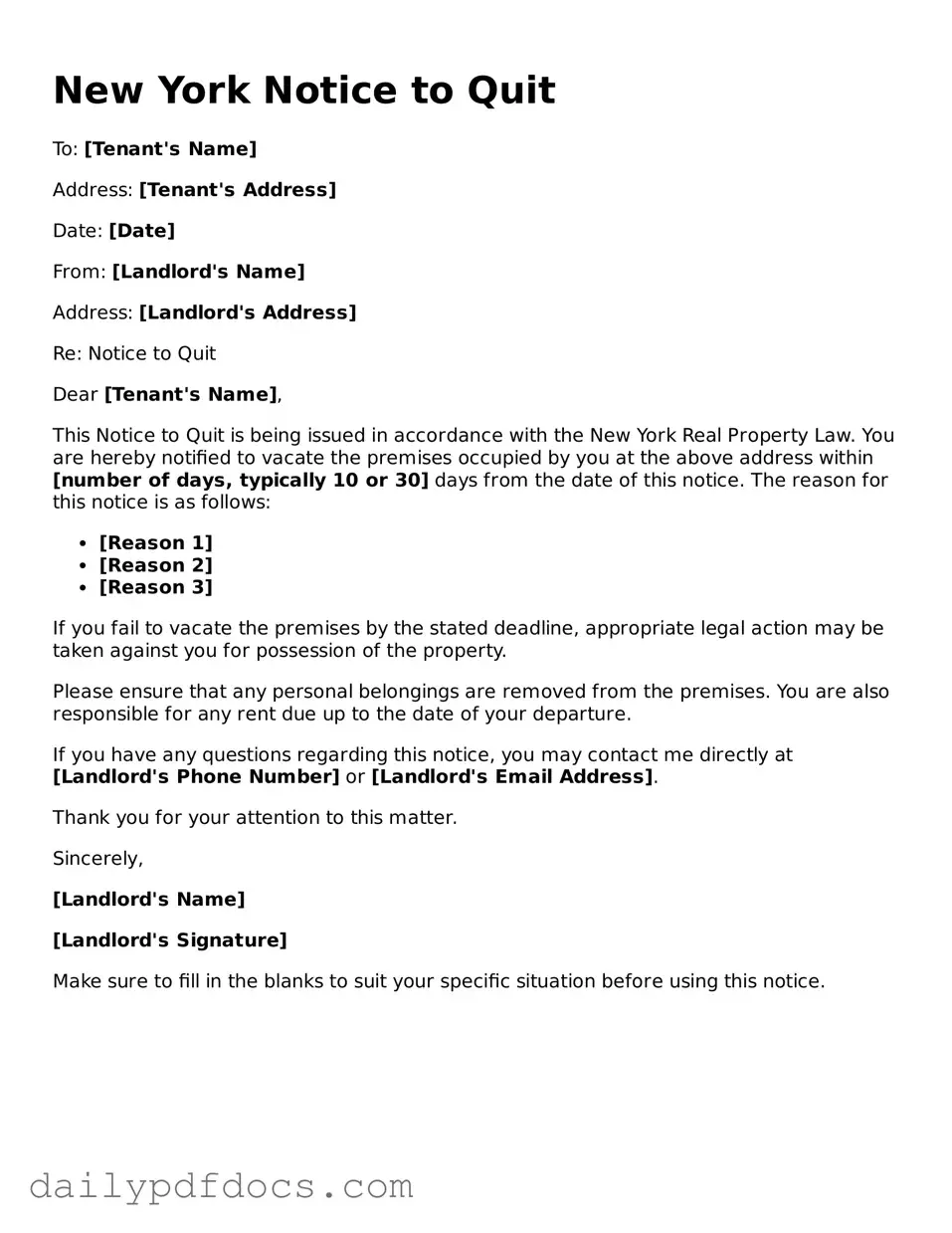What is a Notice to Quit in New York?
A Notice to Quit is a legal document that a landlord provides to a tenant when seeking to terminate a lease agreement. It serves as a formal request for the tenant to vacate the rental property. This document is often the first step in the eviction process and must comply with New York state laws regarding notice periods and delivery methods.
When is a Notice to Quit required?
A Notice to Quit is typically required when a tenant fails to pay rent, violates lease terms, or engages in illegal activities on the property. Depending on the situation, the notice period can vary. For non-payment of rent, a landlord may need to provide a 14-day notice, while other lease violations may require a different timeframe.
How should a Notice to Quit be delivered?
The delivery of a Notice to Quit must be done in a manner that ensures the tenant receives it. Common methods include personal delivery, certified mail, or posting it on the property if the tenant cannot be reached. It is crucial to follow the proper delivery methods to avoid complications in any future legal proceedings.
What information must be included in a Notice to Quit?
A Notice to Quit should include specific information such as the tenant's name, the address of the rental property, the reason for termination, and the date by which the tenant must vacate. Additionally, the notice should state the applicable lease violations or unpaid rent amounts, if relevant.
Can a tenant contest a Notice to Quit?
Yes, a tenant has the right to contest a Notice to Quit. If a tenant believes the notice is unjust or the reasons stated are incorrect, they can respond to the landlord. This may involve negotiating with the landlord or seeking legal advice. If the situation escalates, the tenant may also contest the eviction in court.
What happens if a tenant does not comply with a Notice to Quit?
If a tenant fails to vacate the property by the specified date in the Notice to Quit, the landlord can initiate eviction proceedings. This typically involves filing a petition in housing court. The court will then schedule a hearing to determine whether the eviction is justified based on the evidence presented.
Is legal assistance recommended when dealing with a Notice to Quit?
Yes, it is highly advisable to seek legal assistance when dealing with a Notice to Quit. Both landlords and tenants can benefit from understanding their rights and obligations. Legal counsel can provide guidance on the appropriate steps to take, whether it involves issuing a notice, responding to one, or navigating the eviction process.
Are there any local variations in the Notice to Quit process?
Yes, local laws may vary across different municipalities in New York. While state laws provide a general framework, some cities may have additional regulations or requirements regarding the Notice to Quit process. It is essential to check local ordinances to ensure compliance with all applicable laws.
